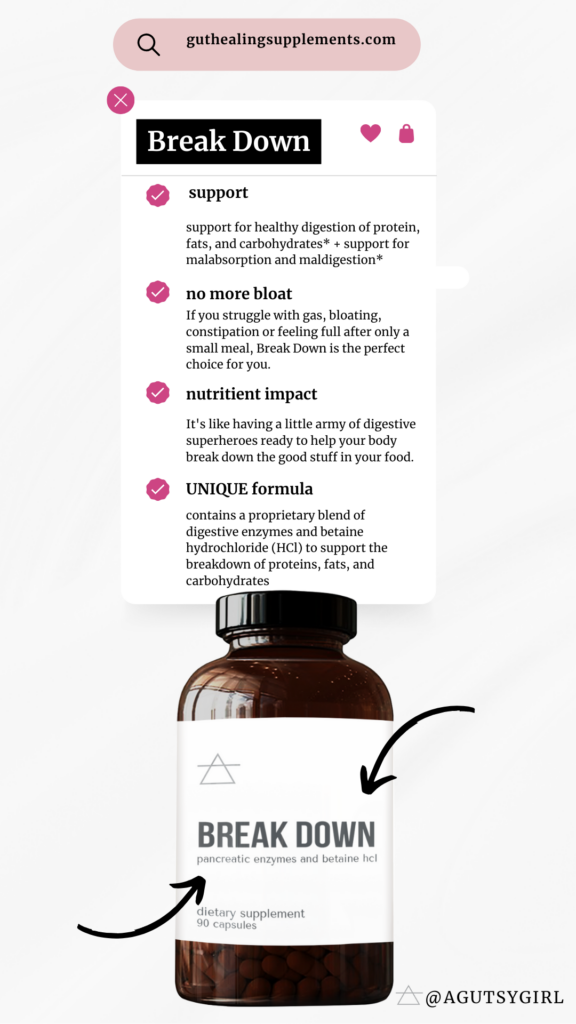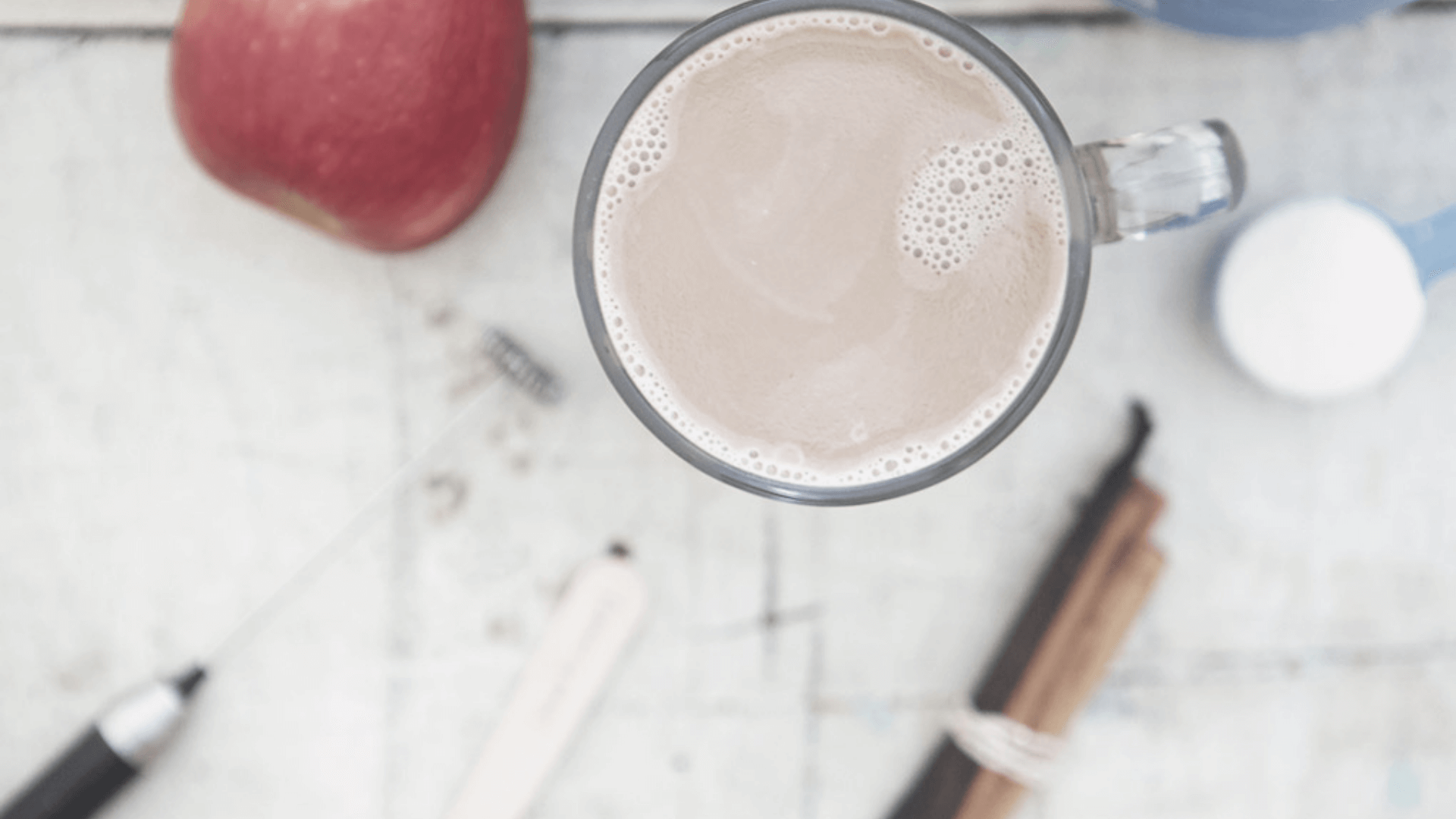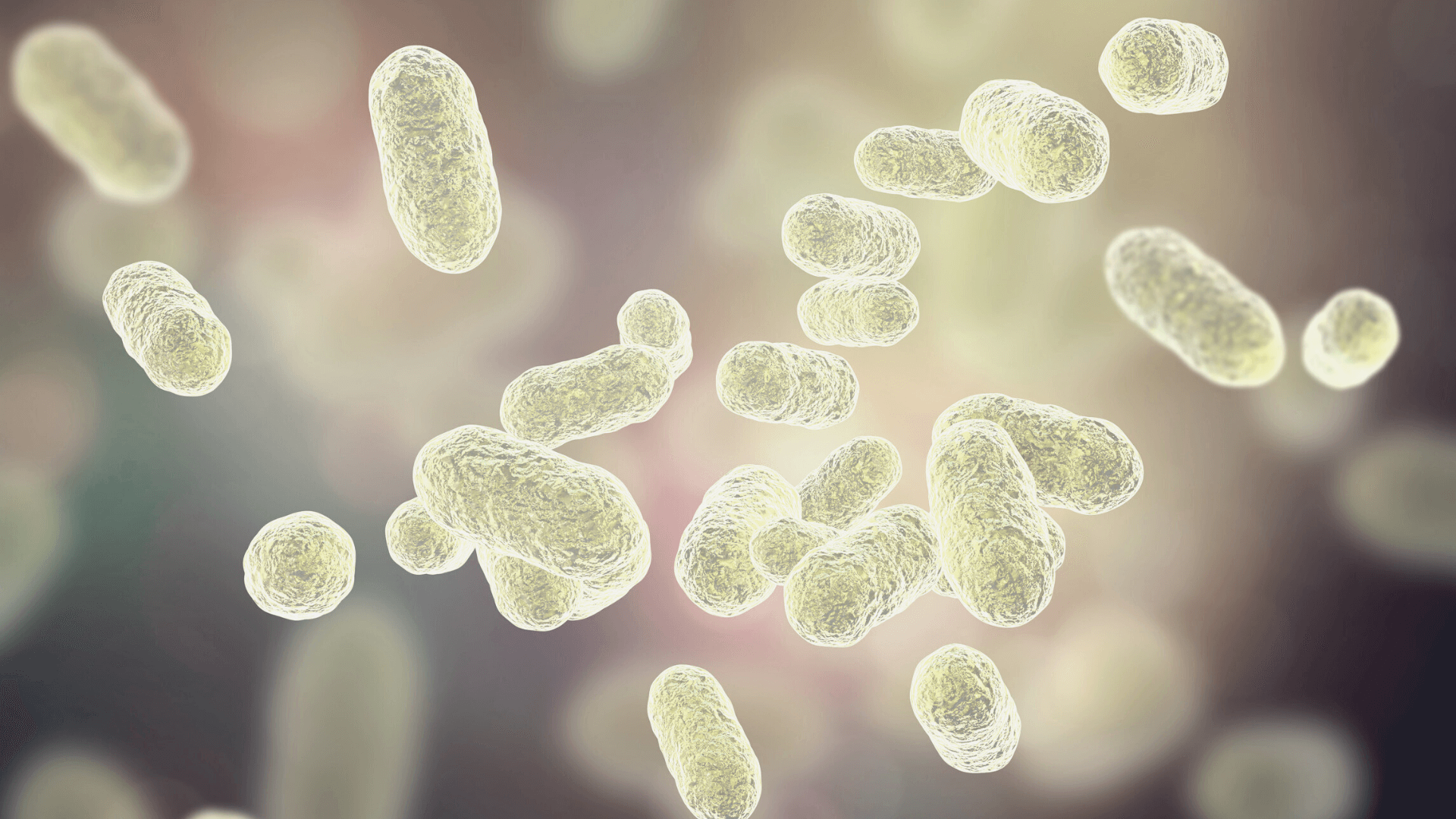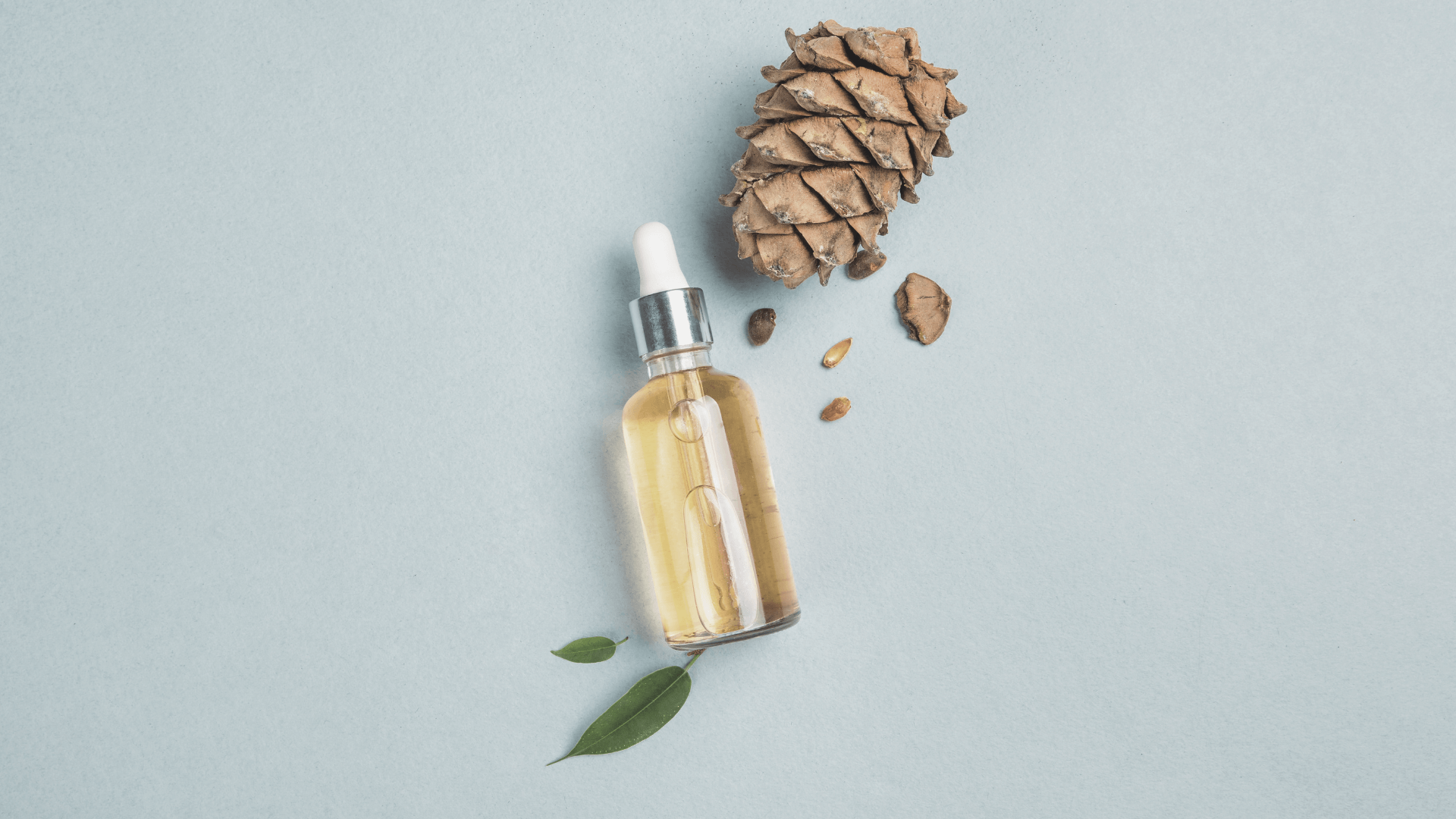Did you know that most nutrient absorption occurs in the small intestine?
And, in fact, here is a very specific stat.
Most of the nutrient transport occurs in the small intestine, whereas the colon is primarily responsible for water and electrolyte transport. (source)
So, why does this matter for you and why am I even talking about it?
Most Nutrient Absorption Occurs in the
Click HERE to save this post for later.

The quick and simple reason is this: many of us have problems in and with the small intestine.
These problems then lead to other problems like weight gain (or loss), fatigue, acne, low immune system, and more.
We wonder, “…..but why?”
Well, if most nutrients are absorbed in the small intestine and there is something wrong with the small intestine, then we aren’t absorbing all (any?) nutrients and therefore a downward spiral of events are occurring.
Okay, so let’s break this all down more.
The Small Intestine
The small intestine (also referred to as the small bowel) is the specialized tubular organ between the stomach and the large intestine (also called the colon or large bowel).
The small intestine is, in fact, much larger than the large intestine. At approximately 22 feet, it is far bigger than the large (at just 6 feet).
These 22-ish feet break down into three parts: the duodenum, jejunum and ileum.
Duodenum
The beginning portion of the small intestine (the duodenum) begins at the exit of the stomach (pylorus) and curves around the pancreas to end in the region of the left upper part of the abdominal cavity where it joins the jejunum.
- receives partially digested food from the stomach
- the shortest segment of the intestine and is about 23 to 28 cm (9 to 11 inches) long
- Hormone glands release here to alert that food is present.
- The mucous lining of the last two segments of the duodenum begins the absorption of nutrients, in particular iron and calcium. (source)
- Inflammation of the duodenum is known as duodenitis. Conditions associated with duodenitis include:
- celiac disease
- Crohn’s disease
- Whipple disease
- H. Pylori infection
- peptic ulcers
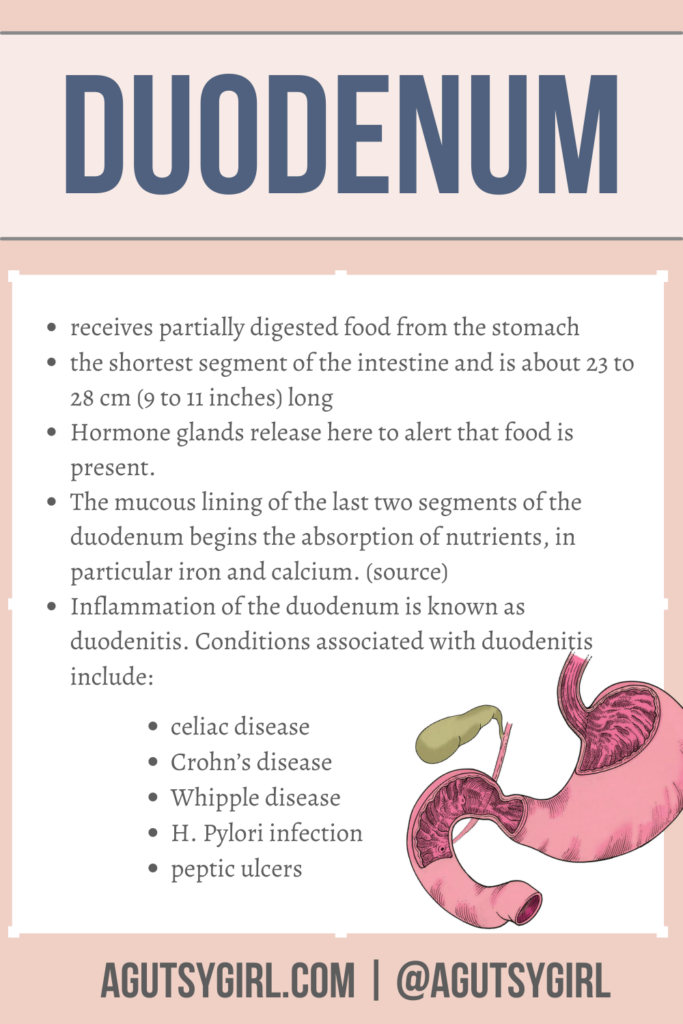
Jejunum
The jejunum makes up the middle half of the small intestine (a little less than half of the remaining length).
- many blood vessels, which give the deep, red color
- nerves trigger, muscle work increases, and the food churns back and forth mixing with digestive juices
- one of the main tasks of the Jejunum include: absorption of lipophilic nutrients (proteins, fats, cholesterol and the fat-soluble vitamins A, D, E and K)

Ileum
The Ileum is the longest section of the small intestine.
- the walls begin to thin and narrow in the Ileum
- blood supply reduces
- food spends the most time here
- most of the water and nutrients are absorbed in the Ileum
- “Small collections of lymphatic tissue (Peyer patches) are embedded in the ileal wall, and specific receptors for bile salts and vitamin B12 are contained exclusively in its lining; about 95 percent of the conjugated bile salts in the intestinal contents is absorbed by the ileum.” (source)
Note: We have talked about the ileocecal valve before. The ileocecal valve separates the ileum from the large intestine.
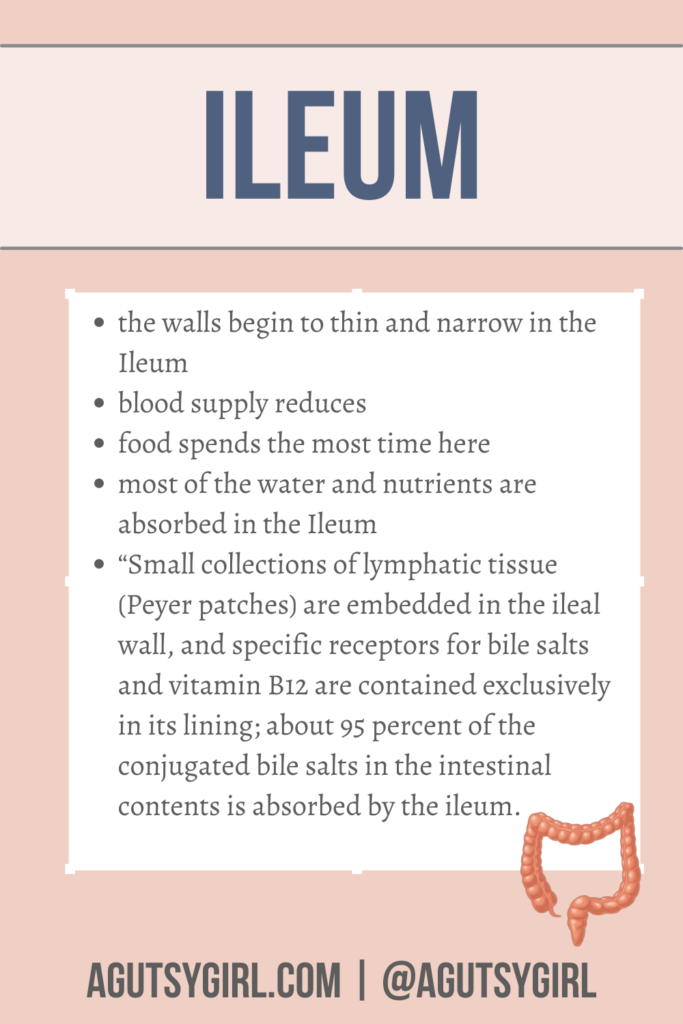
Mucosa
There is another piece to the small intestine that’s crucial to understand. That is the small intestine wall layers.
There are four and they include: the outermost serosa, muscularis, submucosa, and innermost mucosa.
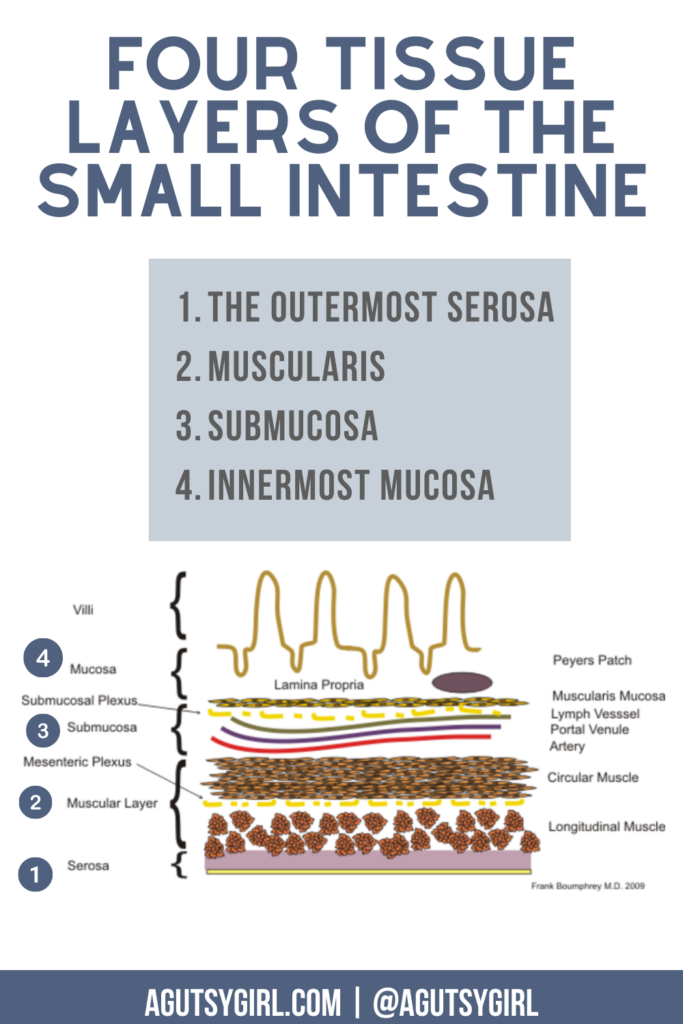
Mucosa (Innermost layer)
Contains the epithelium, lamina propria and muscularis mucosae.
- Epithelium: the epithelium is also very important to highlight, as it lines the luminal (lining) surface. There are a number of components to the epithelium:
- Enterocytes – They have an absorptive function. They contain brush border enzymes on the surface which have an important digestive function.
- Goblet cells – Exocrine glands which secrete mucin.
- Crypts of Lieberkuhn
Submucosa
Connective tissue layer, which contains blood vessels, lymphatics and the submucosal plexus.
Muscularis externa
Consists of two smooth muscle layers; the outer longitudinal layer and inner circular layer. The myenteric plexus lies between them.
Adventitia/ Serosa (Outermost layer)
Comprised of loosely arranged fibroblasts and collagen, with the vessels and nerves passing through it. The majority of the small intestine adventitia is covered by mesothelium and is commonly called the serosa.
The mucosa and submucosa form large numbers of folds arranged in a circular fashion in the lumen.
Additionally, these folds contain microvilli to further increase the surface area, which increases absorption.
Sources: HERE.
Small Intestinal Brush Border Enzymes
There’s one more point of focus worth mentioning, and that focus includes the brush border enzymes.
First, what is a brush border enzyme?
The enzymes responsible for this terminal stage of digestion are not free in the intestinal lumen, but rather, tethered as integral membrane proteins in the plasma membrane of the enterocyte. The apical plasma membrane housing these enzymes is composed of numerous microvilli which extend from the cell and constitute the “brush border”. Hence, the enzymes embedded in those microvilli are referred to as brush border enzymes. (source)
In simplistic terms, the brush border is a chemical barrier through which food must pass to be absorbed.
And the focus I want to emphasize today is their correlation to carbohydrates.
Before doing so, though, if you’d like to geek out with me for roughly 2 minutes, check this out:
Now that we have shared that fun…….
Carbohydrate Breakdown
When it comes to the small intestine, digestion, and absorption, I want to quickly illustrate why you might be having a hard time breaking certain carbohydrates down (and the correlation to brush border enzymes).
Carbohydrates that pass undigested into the large intestine are then digested by intestinal bacteria.
At this point, the brush border enzymes take over.
The most important brush border enzymes include: dextrinase and glucoamylase, which further break down oligosaccharides. (If you’re curious about oligosaccharides, I have written about them HERE.)
In addition to dextrinase and glucoamylase, three other brush border enzymes include: maltase, sucrase, and lactase.
Alright, now you’re starting to recognize some terms we talk about frequently, right?
So, remember what I said in my huge post on Lactose:
The enzyme lactase breaks the sugar lactose into two compounds. However, lactase is absent in most adult humans, and therefore is not digested in the small intestine.
Lactose is not digested until it reaches the small intestine, where the hydrolytic enzyme lactase is located. Lactase (β-galactosidase) is a membrane-bound enzyme located in the brush border epithelial cells of the small intestine. Lactase catalyzes the hydrolysis of lactose into its constituent monosaccharides. SOURCE
Due to all of the above, the facts and information surrounding the brush border enzymes and digestion, it’s one reason why many of us need to supplement with digestive enzymes.
They are a daily supplement for me because I thoroughly understand all of the above.
Major Digestive Enzymes Chart
Furthermore, check out this incredible Major Digestive Enzymes chart via Lumen Learning Courses.
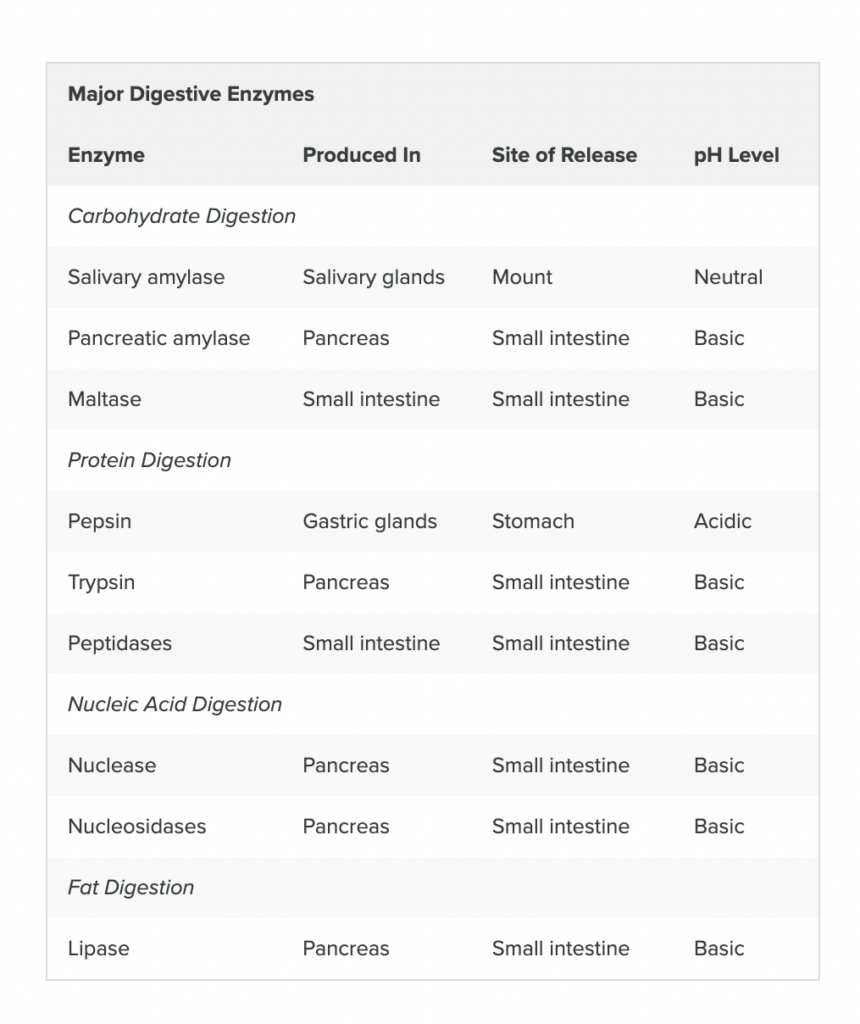
So many enzymes are both produced and released in the small intestine.
A digestive enzyme breaks food down in order to become fully absorbed…..which occurs in the small intestine.
Sources: HERE
What is the MAIN Function of the Small Intestine?
In case this hasn’t been crystal clear yet, let me review this with you one last time.
Functionally, the small intestine is chiefly involved in the digestion and absorption of nutrients.
In case you want more proof for this small-intestine pudding, you can go back through this post and look at all the times I have bolded words about absorption. And by the way, all of those times I have linked to sources for which they were derived from.
Note: one other main function of the small intestine is the production of GI Hormones. If your’e interested in learning more about GI Hormones, I’ve already written about them HERE.
Sources: HERE, HERE, HERE, and HERE.
Why does this matter?
Well, return to the beginning of this post.
The conversation began around problems like weight gain (or loss), fatigue, acne, low immune system, and more that you might be experiencing.
We can eat and eat and eat, but if we are not absorbing due to a problem with the small intestine, then….
- Those problems will continue occurring and
- You’ll need to uncover what is going on with your small intestine and then ultimately how you can heal it
And if you already know that SIBO is your reason, then you might want to start with Reasonable SIBO.
Any questions? Leave them in the comments below.
If you liked this post, you might also enjoy:
Xox,
SKH
🤰 bloating be gone! weight loss through optimal gut health for women
💃ʜᴇᴀʟ ʏᴏᴜʀ ɢᴜᴛ. ʜᴇᴀʟ ʏᴏᴜʀ ʟɪfe.
🫶🏻 founder gutbyome.com

